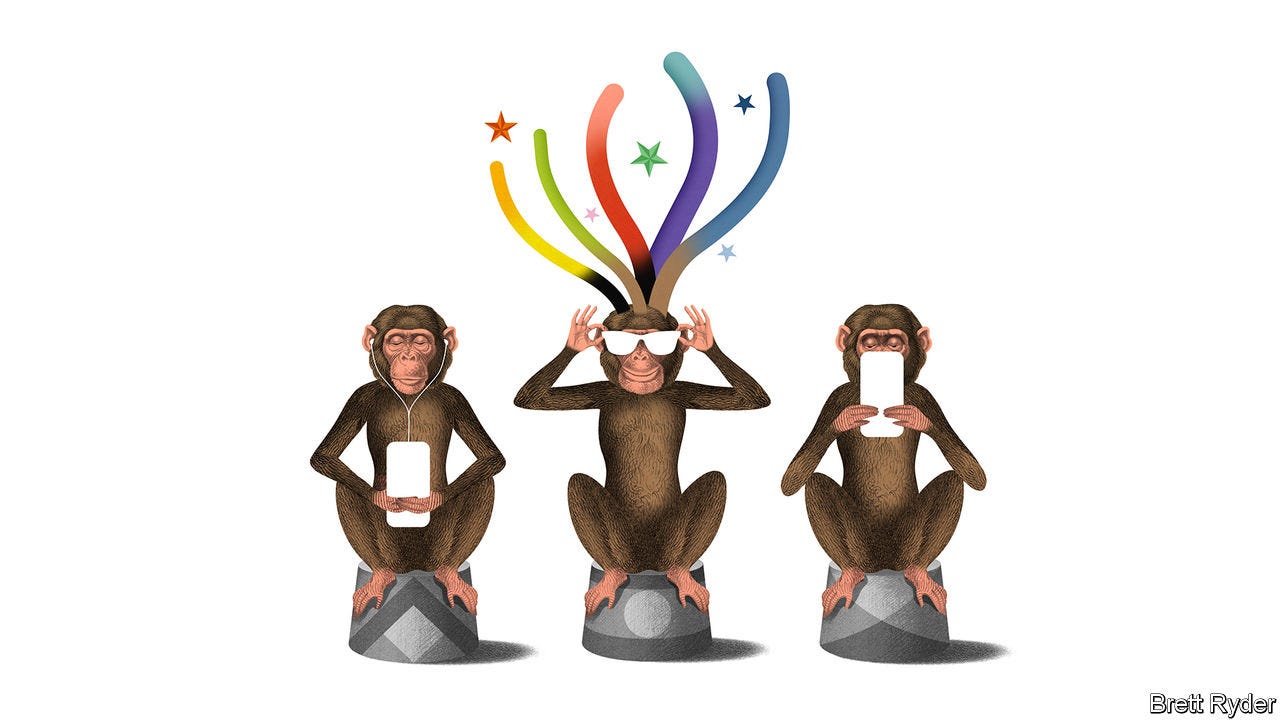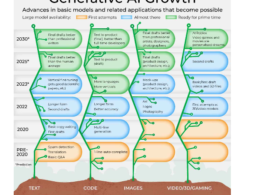the health strategist
institute for strategic health transformation
& digital technology
Joaquim Cardoso MSc.
Chief Research and Strategy Officer (CRSO),
Chief Editor and Senior Advisor
October 6, 2023
What is the message?
The rapid development of generative AI, particularly in the form of AI models like Chat GPT, and the integration of AI into devices like smart glasses and headsets, is challenging the dominance of traditional screen-based devices, such as smartphones.
This transformation is driven by the ability of AI to see, hear, and speak, making it a compelling alternative to screens.
There is a potential for a major shift in consumer technology, as AI-driven devices become more immersive and transformative, offering a glimpse into a future where screens may no longer be the primary interface for human-computer interaction.

Executive Summary:
The tech world is witnessing a paradigm shift as generative AI, like Chat GPT, evolves to see, hear, and speak, offering new possibilities for consumer technology.
This transformation challenges the dominance of traditional screen-based devices, particularly smartphones, as Meta and OpenAI pioneer innovative AI-powered solutions.
Smart glasses, integrated with augmented reality (AR) and AI, are emerging as a compelling alternative. This executive summary explores this transformation, highlighting key statistics and examples.
1: Introduction
The tech industry is on the verge of a groundbreaking shift, potentially marking the twilight of the screen age. Innovations in generative AI, particularly OpenAI’s Chat GPT, that enable AI to see, hear, and speak, are disrupting traditional screen-based devices. This summary delves into the implications of this transformation, focusing on developments by Meta and OpenAI.
2: The Rise of AI-Enhanced Devices
Meta, in collaboration with Ray-Ban, is poised to launch smart glasses with an AI virtual assistant capable of sight and sound. OpenAI’s Chat GPT can now interact through text, voice, and visuals. These advancements open up new horizons for consumer technology beyond the touchscreen.
3: The Allure of Smart Glasses
Smart glasses equipped with AI and AR are gaining traction as potential screen replacements. AI avatars like Chat GPT are already providing a glimpse of the possibilities. The integration of AI and AR offers a transformative user experience, freeing users from the tyranny of traditional screens.
4: Potential for a Hardware Breakthrough
Tech pundits are debating the ideal “form factor” for the chatbot era, with comparisons to the internet’s role in the smartphone revolution. The capability to interact with chatbots through voice and visual interfaces adds weight to Meta’s investments in AR glasses and VR headsets.
5: Zuckerberg’s Vision
Mark Zuckerberg, an early proponent of VR and AR, now sees smart glasses as the more promising market due to gen AI’s rapid advancement. He envisions AR glasses as akin to mobile phones and VR headsets as desktops, both transcending screens and connecting more intimately with users’ physical lives.
Step 6: Challenges and Competition
While screens remain dominant, Meta’s mobile apps and smartphone-dependent services continue to thrive. Competition from Apple and other tech giants also presents challenges for the adoption of new AI-infused devices. The long-term business case and monetization strategies for AI-powered consumer tech are yet to be fully realized.
7: Safety and Regulatory Concerns
The immersive nature of AI-driven consumer technology raises concerns about isolation and unhealthy attachments. Safety measures and regulatory considerations are paramount. Investors are cautious about Meta’s moves in this evolving landscape.
8: The Power of Gen AI
The rapid progress of generative AI models, such as Llama 2 by Meta, is shaping the future of consumer technology.
Smart glasses and headsets may free companies like Facebook from their iPhone dependency, allowing for more data tracking capabilities and potentially transforming the ad business landscape.
9: Apple’s Response
Apple, sensing the shift away from traditional screens, is launching its high-end AR/VR headset, further underscoring the changing landscape.

In conclusion, the fusion of generative AI and innovative devices like smart glasses is reshaping consumer technology.
As AI evolves to see, hear, and speak, it challenges the conventional screen-based paradigm and offers exciting possibilities for the future. The transition is still in its early stages, with challenges and regulatory considerations ahead, but the potential for transformative change is undeniable.
This is an Executive Summary of the article “So long iPhone. Generative AI needs a new device”, published on the Economist.
Originally published at https://www.economist.com on October 5, 2023.












